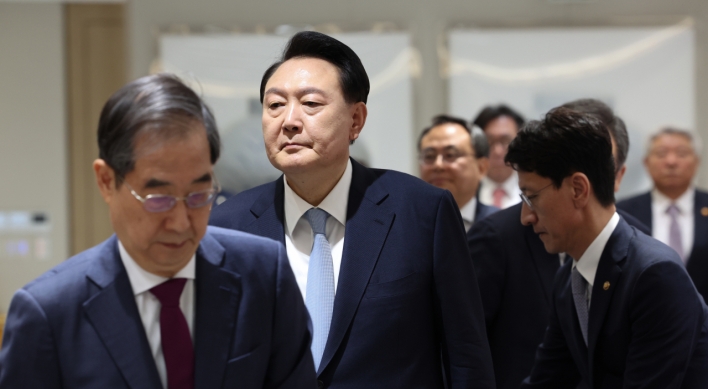A foreign government suing Yale University? That is an odd combination of opponents in a legal dispute. But that is what is happening in the U.S. federal court in Washington, D.C.

In December 2008, the Peruvian government filed a complaint against Yale to reclaim Machu Picchu cultural artifacts from the Peabody Museum of Natural History of Yale University. The artifacts are pottery, textiles and bones of Incan people.
Peru argues that they were illegally taken out from the country 100 years ago and that the university has wrongfully kept them ever since. They are the collection of Hiram Bingham III, a Yale professor, who discovered the Incan site in 1911, and who is sometimes mentioned as the inspirational figure for Steven Spielberg’s Indiana Jones series.
When I visited the Peabody Museum in November 2007 to conduct research on this issue, the tension was at its height. They failed to reach agreement and a legal battle soon followed.
The pressure from the legal front and the increasing public movement in Peru has apparently paid off: Machu Picchu cultural artifacts are now going back home in 100 years. Last Friday, Yale and Peru finally reached an agreement. Although the specific terms have not been disclosed, they seem to have met each other halfway. The two sides will establish the Center for the Study of Inca Culture in Cusco, which will then house and display the returned items.
As noted in my article of Oct. 5 last year, the legal framework for the repatriation of cultural artifacts is, unfortunately, very limited and blurry. It is almost impossible to force repatriation unless fraud or smuggling in a relatively recent period (say after 1970 when a UNESCO convention was adopted) is involved.
Another hurdle for the repatriation is the “better conservation” argument. Museums maintain the position that cultural objects are the common heritage of all mankind and that they can take of them than the countries the artifacts came from. They point out that they have protected these artifacts from disappearance and private collections. Yale has relied upon this rationale and so have other museums holding foreign artifacts.
The Peruvian government preempted this “better conservation” argument by establishing new museums and introducing plans for the conservation of the artifacts when returned. Lima also put a joint research activity proposal on the table as a sweetener for the deal in which foreign scholars can get access to the artifacts. This repatriation strategy may be called a “collaboration” approach.
In fact, the Peruvian situation is not the only example of collaboration. For its part, Italy has pursued the J. Paul Getty Museum in Los Angeles and the Metropolitan Museum of Art in New York for the repatriation of ancient treasures that were excavated and smuggled by looters in recent decades and changed hands through the black market. As these museums were arguably bona fide purchasers, it quickly became clear that pursuing legal attempts alone would be futile.
In tandem with legal actions, Italy also took a similar collaboration approach to Peru. They tried to convince the museums that returning the artifacts to Italy is a better option for them as well. The final deals include various mutual cooperation promises such as return-and-loan agreements.
As many countries make efforts to bring their misplaced cultural artifacts home, these recent examples of the collaboration approach certainly deserve more attention. The Peru-Yale deal of last week may offer some food for thought to interested parties in other similar disputes. Through the collaboration approach, Peru has showed that bringing the artifacts home is not only morally right but also ensures better conservation of these artifacts.
It is now entirely illegal for Indiana Jones to put the crystal skull in his bag and take it home. All cultural items should be reported to the authorities of the originating country and can only be exported with the permission of the authorities. Alas, there was no such requirement 100 years ago.
The recent report of missing Egyptian artifacts during the chaos in Cairo reminds us again that tomb raiders are still in action. Maybe a couple of decades later, these items will turn up in a museum in Europe or in America.
By Lee Jae-min
Lee Jae-min is a professor of law at the School of Law, Hanyang University. ― Ed.

In December 2008, the Peruvian government filed a complaint against Yale to reclaim Machu Picchu cultural artifacts from the Peabody Museum of Natural History of Yale University. The artifacts are pottery, textiles and bones of Incan people.
Peru argues that they were illegally taken out from the country 100 years ago and that the university has wrongfully kept them ever since. They are the collection of Hiram Bingham III, a Yale professor, who discovered the Incan site in 1911, and who is sometimes mentioned as the inspirational figure for Steven Spielberg’s Indiana Jones series.
When I visited the Peabody Museum in November 2007 to conduct research on this issue, the tension was at its height. They failed to reach agreement and a legal battle soon followed.
The pressure from the legal front and the increasing public movement in Peru has apparently paid off: Machu Picchu cultural artifacts are now going back home in 100 years. Last Friday, Yale and Peru finally reached an agreement. Although the specific terms have not been disclosed, they seem to have met each other halfway. The two sides will establish the Center for the Study of Inca Culture in Cusco, which will then house and display the returned items.
As noted in my article of Oct. 5 last year, the legal framework for the repatriation of cultural artifacts is, unfortunately, very limited and blurry. It is almost impossible to force repatriation unless fraud or smuggling in a relatively recent period (say after 1970 when a UNESCO convention was adopted) is involved.
Another hurdle for the repatriation is the “better conservation” argument. Museums maintain the position that cultural objects are the common heritage of all mankind and that they can take of them than the countries the artifacts came from. They point out that they have protected these artifacts from disappearance and private collections. Yale has relied upon this rationale and so have other museums holding foreign artifacts.
The Peruvian government preempted this “better conservation” argument by establishing new museums and introducing plans for the conservation of the artifacts when returned. Lima also put a joint research activity proposal on the table as a sweetener for the deal in which foreign scholars can get access to the artifacts. This repatriation strategy may be called a “collaboration” approach.
In fact, the Peruvian situation is not the only example of collaboration. For its part, Italy has pursued the J. Paul Getty Museum in Los Angeles and the Metropolitan Museum of Art in New York for the repatriation of ancient treasures that were excavated and smuggled by looters in recent decades and changed hands through the black market. As these museums were arguably bona fide purchasers, it quickly became clear that pursuing legal attempts alone would be futile.
In tandem with legal actions, Italy also took a similar collaboration approach to Peru. They tried to convince the museums that returning the artifacts to Italy is a better option for them as well. The final deals include various mutual cooperation promises such as return-and-loan agreements.
As many countries make efforts to bring their misplaced cultural artifacts home, these recent examples of the collaboration approach certainly deserve more attention. The Peru-Yale deal of last week may offer some food for thought to interested parties in other similar disputes. Through the collaboration approach, Peru has showed that bringing the artifacts home is not only morally right but also ensures better conservation of these artifacts.
It is now entirely illegal for Indiana Jones to put the crystal skull in his bag and take it home. All cultural items should be reported to the authorities of the originating country and can only be exported with the permission of the authorities. Alas, there was no such requirement 100 years ago.
The recent report of missing Egyptian artifacts during the chaos in Cairo reminds us again that tomb raiders are still in action. Maybe a couple of decades later, these items will turn up in a museum in Europe or in America.
By Lee Jae-min
Lee Jae-min is a professor of law at the School of Law, Hanyang University. ― Ed.









![[KH Explains] How should Korea adjust its trade defenses against Chinese EVs?](http://res.heraldm.com/phpwas/restmb_idxmake.php?idx=644&simg=/content/image/2024/04/15/20240415050562_0.jpg&u=20240415144419)









